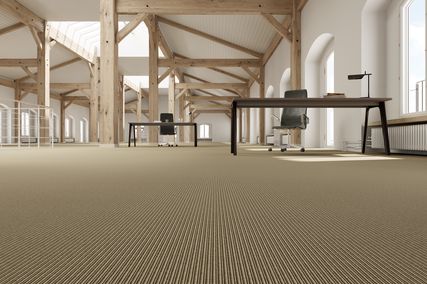Professor Alan Pert and I spent last Tuesday morning in a cemetery. We were filming for a subject called Design for Ageing as part of a new Master of Ageing at the University of Melbourne. We are drawing together academics and industry experts from architecture, urban design, planning, property development and advocacy. It may seem odd to begin a subject in a cemetery, but the ages on the gravestones from a century ago highlight a longevity revolution, with life expectancy almost doubling in the past century. This is a good news story but one with design implications. The number of Australians over 65 is expected to double in the next forty years.
The Third Age
Improved health and longevity has created a new group of aged coined the Third Age by Peter Laslett in 1989 or the Young-Old by Bernice Neugarten in 1974.
American third-agers are celebrating the good life. Many spend their winters in Quartzite, Arizona or relocate to Florida retirement villages. Others are cruising the highways in their Winnebago RVs. American grey nomad’s number between two and three million today and Wal-Mart offers their carparks as overnight campsites.
What Australian options exist for this group of third-agers? Chasing the sun on the Gold Coast or the life of geriatric gypsies? While a large number of the aged struggle financially, many retirees are cashed up. Baby boomers comprise 25% of our population and hold over 50% of Australia’s private wealth.
Designing for the aged
Given our ageing and growing population, architects should be honing skills in retirement village design or aged-care homes. Even more importantly, we need age-friendly housing and neighbourhoods. Age-friendly design makes cities more liveable and affordable for all.
Ageing in place brings social advantages, at least until frailty reduces mobility. With technology helping connect people to people and people to services, we can expect ageing in place to become more common.
A family home designed today might be home to young-old retirees or a frail older person in future. Designs should be easily retrofitted to suit different abilities without major expense. Planning should encourage design for future subdivision for a carer, income, or multigenerational families. Some neighbourhoods have the potential to develop into “Naturally Occurring Retirement Communities”, or NORCs. NORCs are well recognised within the United States. A suburb for young families may evolve into a NORC as children leave home.
Rathdowne Place in Carlton, Melbourne by Jackson Architecture (2014) provides aged care housing in the inner city, allowing residents to stay close to friends and family.
Over 50% of middle and inner suburban detached houses in Sydney and Melbourne are occupied by the over fifties. What will attract people out of their family house and into more efficient accommodation?
Retirement villages such as The Arbour in NSW encourage downsizing as do the prefabricated villages on leasehold land such as those offered by Gateway Lifestyle – but currently only around 200,000 of our 3.3 million Australians over 65 live in retirement villages. A difficulty in Australia is that affordable retirement villages are located in outer suburbs or in regional areas because of land costs and availability.
Higher density lifestyles for families and the aged are common in Europe and Asia and have advantages in terms of access, proximity and social affordances.
The World Health Organisation (WHO) Global Age-Friendly Cities publication provides guidelines on how communities can support ageing. Its recommendations take a holistic approach to housing, transport and urban planning, to encourage community participation. By 2015, nearly 300 communities from 33 countries covering 113 million people are recognised by WHO as being age-friendly.
A linked strategy is the 8 80 cities initiative that promotes walking, bicycling and urban parks. The proposition is that design meeting the needs of both an eight and an 80 year old is likely to meet the needs of all people.
The ageing demographic of Australian suburbs is an opportunity to review planning and urban design to improve proximity to parks, services and shops, access to well-considered transport systems, and promote safe streets and crossings within diverse communities at a local government level.
Suite entry in Jackson Architecture’s Rathdowne Place. Picture windows help with wayfinding.
Just six per cent of people over 65 live in non-private accommodation such as aged care homes and hostels. High-care settings need to be respectful of the abilities and desires of each resident, particularly in terms of privacy and personalisation.
Designing adaptable housing
Design for the aged-care sector is changing rapidly. The five-storey Rathdowne Place (2014) by Jackson Architecture is innovative in both design and operation. Residents and guests have shared kitchen and social areas. Small glazed display cases at entryways to each suite help orientation and personalisation. Nursing offices, record-keeping and drug cabinets are in back-of-house zones. Shared services and a ground-floor café link into the community.
There is increasing understanding of how design can support people with dementia, both in the home and in more specialised aged care settings. The recent journal called Evidence-Based Design devoted much of its first issue to designing for people with dementia.
The range of design needs for people aged 65 and over is diverse. Sue Hendy, CEO of the Council on the Ageing (COTA), describes three babies born an hour apart. She suggests that this is the time when they are most alike. Add seventy or eighty years of experience and older people become the most diverse group we could design for in terms of experiences, expectations, outlooks, abilities, knowledge and tastes. Providing choice and adaptability within the built environment is one way to cater for the diversity within the aged group.
In conclusion, perhaps the most significant recent design transformation has been a shift towards a respectful focus on design for ability, even when abilities are reduced whether through dementia, sight and hearing losses or frailty. The future is looking rosier.




















